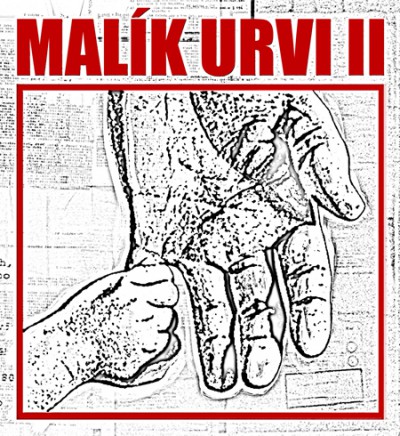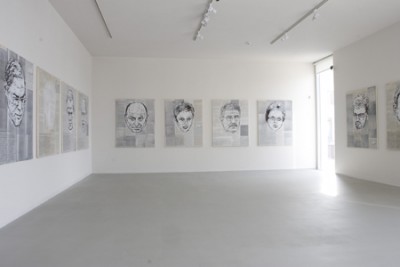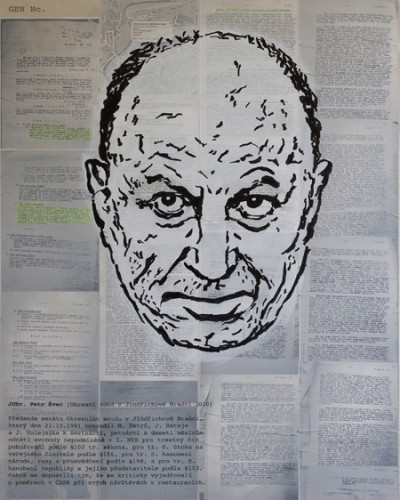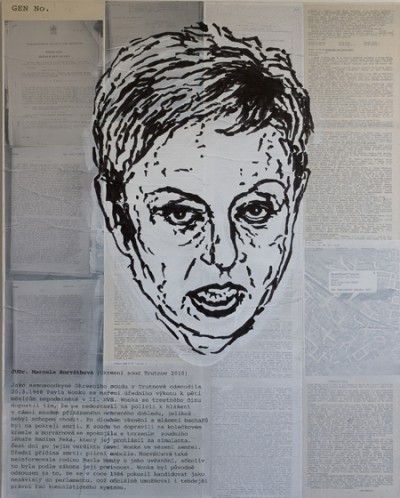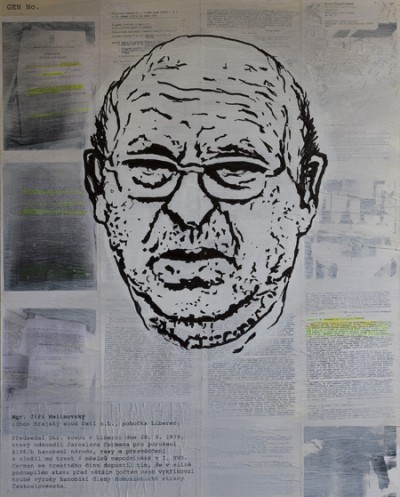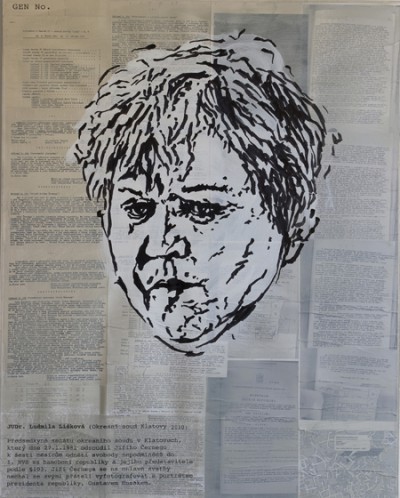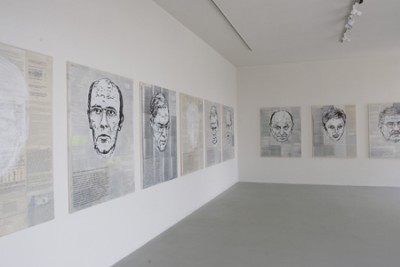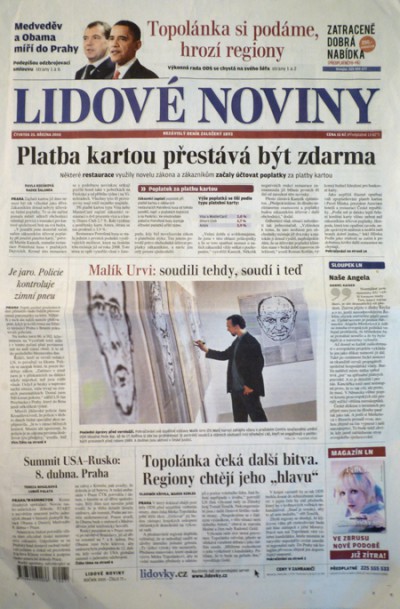MALIK URVI II., 2010
Ten years after, the artistic group Pode Bal has prepared a sequel to their famous and controversial exhibition Malík Urvi (a pun meaning literally “tear off the little finger” and implying “little whores”). The original exhibition took place in January 2000 at the Václav Špála Gallery, displaying 36 portraits of former collaborators with the StB police, KGB, StB officers and communist officials who maintained their important positions in Czech society after the Velvet Revolution. The portraits included a biography of the relevant person with information about his/her pre- and post-revolution activities. The exhibition had an extraordinary viewership and met with unheard-of interest from both the media and the general public. The project launched a discussion in artistic circles and became a key event in art focusing on the political and social aspects of the Velvet Revolution. http://www.doxprague.cz/en/exhibition?24/about
The project MALIK URVI II consists of 30 portraits of actual judges and public prosecutors, chosen simply as a cross-section of the dozens of events that invite reflection about the problematic dependence between individuals and the system of power. Those who had a hand in the political trials of totalitarian systems generally defend themselves in the same way: “I was only doing my job. I always acted in accordance with the law.” Individuals understand their actions as part of the system and therefore they do not admit any direct, personal responsibility. Every system is dependent on specialists, who “merely do their jobs”. Every system is capable of creating them. Some of the specialists then act with particular zeal, while others maneuver through the structure of the system, believing they can reduce its aggressivity. The project seeks essentially to probe the system and therefore the range of selected individuals and their involvement in political trials is fairly broad. They all have one thing in common: they are all still involved in the judiciary, often at the highest levels. Pode Bal states in this connection: “A system based on the functional integration of the administrators of the previous system’s violence, is preset to permit the use of such violence to return."
